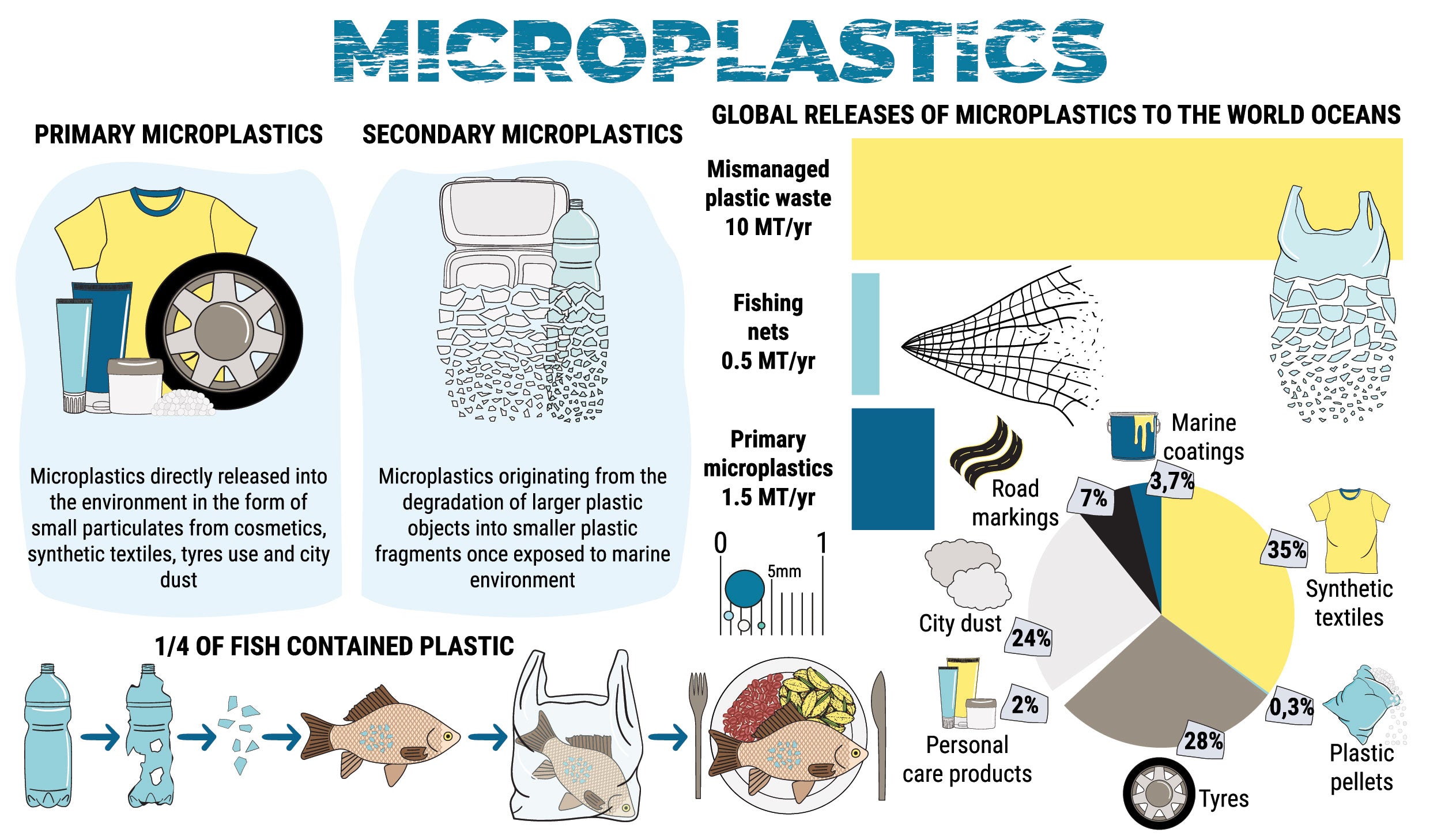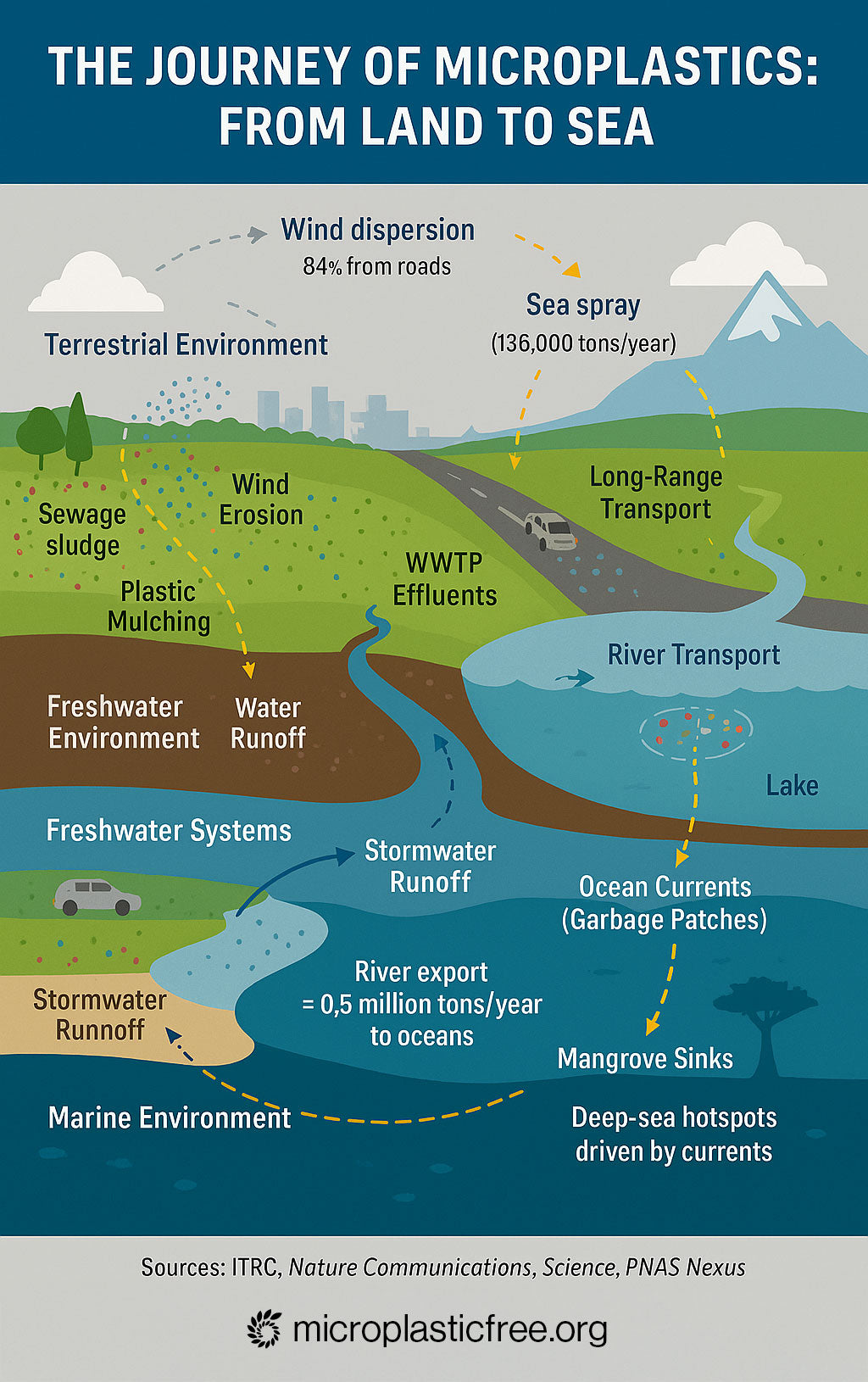Introduction: Defining Microplastics and Their Significance
Microplastics are small plastic particles, defined as less than 5 millimeters (mm) in size, a threshold established by scientific authorities such as the U.S. National Oceanic and Atmospheric Administration (NOAA) (NOAA) and the National Geographic Society (National Geographic). This size, roughly smaller than a standard pearl used in jewelry, allows these particles to infiltrate diverse ecosystems, posing significant environmental and health risks due to their persistence and widespread distribution. Research confirms their presence in marine environments, freshwater systems, terrestrial soils, and even the atmosphere, with potential consequences for biodiversity and human health through ingestion and inhalation (Wikipedia).
Their significance stems from their durability and accumulation. Unlike organic materials, microplastics do not readily biodegrade, persisting in ecosystems and entering food chains. A 2023 study found that 80% of microplastics in fish species were fibrous, with dominant polymer types including polyethylene (PE, 25%), polyester (20%), and polyamide (10%), highlighting their pervasive reach (Wikipedia).
Origins of Microplastics
Microplastics originate from two primary categories: primary sources, which are manufactured at small sizes, and secondary sources, resulting from the breakdown of larger plastics. Each contributes uniquely to environmental pollution.
Primary Sources
Primary microplastics are intentionally produced at sizes less than 5 mm for specific applications. Key examples include:
- Microbeads: Used in personal care products like exfoliating scrubs and toothpastes, these tiny spheres were once common until banned in several regions due to environmental concerns.
- Industrial Pellets (Nurdles): Small plastic beads used as raw materials in manufacturing, often lost during transport or handling.
- Microfibers: Released from synthetic textiles (e.g., polyester, nylon) during washing, entering waterways via wastewater systems.
- Tire Dust: Generated from synthetic rubber in tires wearing down on roads, contributing significant microplastic emissions.
A 2015 report by the Joint Group of Experts on the Scientific Aspects of Marine Environmental Protection (GESAMP) identified cosmetics and textiles as major sources, noting that washing machines release vast quantities of microfibers into aquatic systems (First Sentier MUFG Sustainability). Tire wear, a less obvious but critical source, is estimated to release substantial microplastic particles, with studies highlighting its impact on urban runoff (ECHA).
Secondary Sources
Secondary microplastics arise from the degradation of larger plastic items, such as bottles, bags, and packaging, through environmental processes. These processes include:
- Physical Fragmentation: Wave action, mechanical abrasion, and wind break plastics into smaller pieces.
- Chemical Degradation: UV radiation and oxidation weaken polymer bonds, accelerating breakdown.
- Biological Processes: Ingestion and digestion by organisms, such as marine life, further fragment plastics.
A 2019 study in Mediterranean coastal waters found that secondary microplastics, particularly fragments, dominated pollution levels, underscoring the role of environmental degradation (ScienceDaily). This fragmentation process is ongoing, amplifying microplastic prevalence over time.
Classification of Microplastics
Microplastics are categorized based on physical and chemical properties—size, shape, and polymer type—to facilitate identification, source tracking, and impact assessment.
Size
The defining characteristic of microplastics is their size: less than 5 mm. Some researchers subdivide this category into:
- Large Microplastics: 1–5 mm
- Small Microplastics: Less than 1 mm
Nanoplastics (<1 micrometer, μm) are sometimes distinguished but typically fall outside the microplastic definition (ScienceDirect). Size classification is crucial for detection techniques (e.g., microscopy, spectroscopy) and understanding ecological interactions.
Shape
Microplastics come in various morphologies, each linked to specific sources:
- Fibers: Predominantly from textiles, common in aquatic and soil environments.
- Fragments: Irregular pieces from broken plastics, often the most abundant shape.
- Beads: Spherical particles from cosmetics or industrial pellets.
- Foams: Lightweight, porous pieces from packaging or insulation.
- Films: Thin layers from plastic bags or wraps.
- Pellets: Small, uniform shapes from manufacturing spills.
A 2021 study on soil microplastics identified fibers as predominant in agricultural settings, while fragments dominated in river systems, comprising 53.8–72.6% of samples (PMC; ResearchGate).
Polymer Type
The chemical composition of microplastics varies, with common polymer types including:
- Polyethylene (PE): Used in packaging, highly persistent.
- Polypropylene (PP): Found in containers and ropes, widely distributed.
- Polystyrene (PS): Common in foam products, breaks into small fragments.
- Polyester: Prevalent in textiles, a major microfiber source.
- Polyamide (Nylon): Used in fishing gear and fabrics.
- Polyethylene Terephthalate (PET): From bottles and packaging.
A 2023 study in fish species identified PE (25%), polyester (20%), and polyamide (10%) as dominant, while Mediterranean waters showed PE, PP, and PS as most abundant, reflecting their widespread use (Wikipedia; ScienceDaily). Polymer type affects degradation rates and toxicity, with PE and PP noted for their longevity.
Formation and Distribution
Microplastics’ formation mechanisms and global distribution highlight their environmental pervasiveness.
Formation Mechanisms
Primary microplastics are produced small by design, while secondary microplastics form through fragmentation. Key processes include:
- Physical: Mechanical forces like waves and abrasion.
- Chemical: UV-induced photodegradation and oxidation.
- Biological: Breakdown within organisms’ digestive systems.
Irregular shapes of secondary microplastics often indicate environmental breakdown, a key formation clue (Wikipedia).
Distribution
Microplastics are found across all environmental compartments:
- Marine: Oceans and seas, including deep-sea sediments.
- Freshwater: Rivers, lakes, and groundwater.
- Terrestrial: Soils and sediments.
- Atmospheric: Airborne particles transported by wind.
A 2019 EU review confirmed their presence in remote regions like the Arctic, with the U.S. EPA noting their ubiquity in both natural and built environments (PMC; EPA).
Emerging Considerations: Bioplastics
While traditional plastics dominate microplastic research, bioplastics like polylactic acid (PLA) introduce complexity. Designed to be biodegradable, PLA can still form microplastics under certain conditions. A 2024 study by HYDRA Marine Sciences found PLA fully hydrolyzes in water, leaving no persistent particles (NatureWorks). However, other research indicates degradation can take decades in natural settings, contributing to microplastic pollution (3Dnatives). This variability complicates its classification and environmental impact assessment.
Summary Table
| Category | Details |
|---|---|
| Size | <5 mm; large (1–5 mm), small (<1 mm) |
| Shape | Fibers, fragments, beads, foams, films, pellets |
| Polymer Type | PE, PP, PS, polyester, polyamide, PET |
| Primary Sources | Microbeads, pellets, microfibers, tire dust |
| Secondary Sources | Degradation of bottles, bags, packaging |
Conclusion
Microplastics represent a multifaceted environmental challenge, with origins in both intentional production (primary sources) and unintentional degradation (secondary sources). Their classification by size, shape, and polymer type provides critical insights into their sources and impacts, while their global distribution underscores the urgency of mitigation efforts. The emerging role of bioplastics like PLA adds nuance, suggesting a need for continued research. This comprehensive overview, grounded in scientific literature, aims to inform stakeholders and guide strategies for reducing microplastic pollution.
References
- Microplastics - Wikipedia
- What are microplastics? - NOAA
- Microplastics - National Geographic Society
- Microplastics: Finding a consensus on the definition - ScienceDirect
- Microplastics: A Real Global Threat - PMC
- Microplastics Research - US EPA
- PE, PP, and PS in Mediterranean Waters - ScienceDaily
- Microplastic Shape and Soil Properties - PMC
- Sources of Microplastics - First Sentier MUFG
- Microplastics - ECHA
- Microplastics Shapes at Sea - ResearchGate
- PLA and Microplastics - NatureWorks
- Is PLA Biodegradable? - 3Dnatives



Leave a comment
This site is protected by hCaptcha and the hCaptcha Privacy Policy and Terms of Service apply.